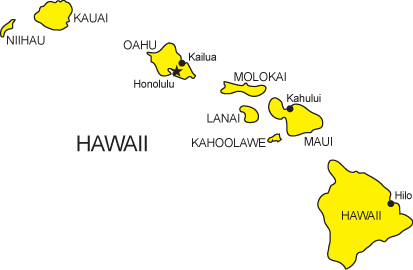Rainbows are one of nature's most beautiful ephemeral visible phenomena, coming to earth as an arch of brilliant color (when it falls after a light rain anyway). But there is one area in the United States that specializes in rainbows, rather than just luck of the draw - Hawaii, aka "the rainbow capital of the world." With a unique tropical climatology, pristine air quality & sunshine showers, it's got to be one of the best places on the planet to witness rainbows. There is something magical about living or visiting there if you happen to see a rainbow. But what makes Hawaii the perfect place for rainbows? Let's dive into the science and culture.
Check Out: List of Top 10 Best Places to See Rainbows in the World
Hawaii: Rainbow Capital of the World
There’s a reason that Hawaii is called the “Rainbow Capital of the World.” The unique climate of the islands creates the perfect environment for rainbows to form frequently and vividly. The sunshower, that is, light rain when the sun is shining, is common in Hawaii due to the trade winds drawing humid air from the ocean across the islands.
As this moisture is lifted over the mountains and cooled, it produces light rain, often while the sun is still shining. When coupled with the clean and unpolluted, looked-through skies of Hawaii, the result yields near-perfect conditions for rainbows to form, even double rainbows or circular rainbows.
Rainbows appear so often in Hawaii that they are ingrained in the culture, showing up on everything from license plates to wall art, and even sports teams like the university’s “Rainbow Warriors.” When you see or even capture a rainbow in Hawaii, it is not just a lucky moment, but almost a daily reminder of the islands’ natural beauty and magic, for both residents and visitors alike.
Why is Hawaii the Rainbow Capital of the World?

Here are some of the common reasons why Hawaii is called the Rainbow Capital of the World:
1. Singular Climate and Geography
-
Frequent Rainy Showers: La Niña happens because Hawaii has frequent light rain showers, particularly in the morning and afternoon. These are brief showers, and many of the incidents happen when it is sunny, making it easy for rainbows to occur.
-
Abundant Sunshine: Hawaii is a small island located near the equator, which yields high angles of sunshine nearly every day. A rainbow is energized by the sunlight hitting water droplets (rain), which create a prism at the right angle; therefore, Hawaii has a strong rain and sun combination.
-
Mountainous Terrain: The volcanic mountains and valleys create microclimates that have localized rain days or afternoons as opposed to a full-day overcast. The effect of raindrops creates local areas of rain instead of a widespread rain occurrence. This allows the occasional for the possibility for rainbows to happen in many areas at different times. These environmental factors support rain showers during the day, allowing the conditions for rainbows.
2. Atmospheric Characteristics Ideal for Rainbows
-
Trade Winds and Moisture: The easterly trade winds deliver moist air to Hawaii, which happens to cool down as the moisture travels up and over the mountains. When the moisture combines with the possible clear sky, it creates the ideal conditions for rainbow formations.
-
Sun's Angle: The sun, in conjunction with the horizon on the Island of Hawaii, is also favorable for the formation of brightly colored rainbows, as well as double rainbows.
3. Cultural Significance
-
Spiritual Meaning: Within Hawaiian Culture, rainbows are sacred and signify an earthly connection to the spiritual world.
-
Mythology: Rainbows come from Hawaiian mythology. The rainbow symbolizes not just light but also guidance, protection, and presence.
-
Modern Identity: Hawai‘i promotes the rainbow as a representation of the natural beauty of the undersea and cultural diversity associated with its identity. Hawaii is actively using the rainbow in state identification, from license plates to the tourism marketing of the travel experience.
4. Scientific Validation
Studies have highlighted that Hawai‘i has more rainbows per square mile than anywhere else in the world, based on the environment's perfect combination of factors. The University of Hawaii at Mānoa continues to highlight this unique weather phenomenon, which supports Hawai‘i's claim to the nickname.
Comments
All Comments (0)
Join the conversation